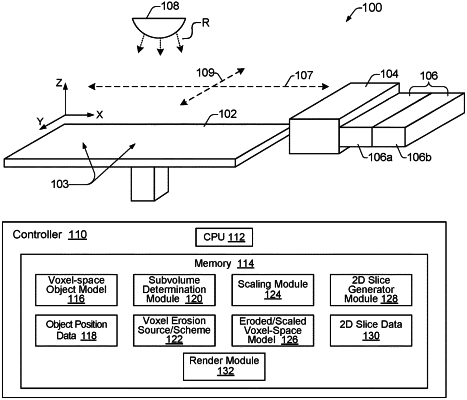| CPC G06T 19/20 (2013.01) [B22F 10/80 (2021.01); B29C 64/393 (2017.08); B33Y 50/02 (2014.12); G06F 30/17 (2020.01); G06F 2113/10 (2020.01)] | 12 Claims |

|
1. A method of compensating for dimensional variation in 3D printing comprising:
receiving, by a processor, a voxel space model that represents a 3D object to be printed within a build volume of a 3D printing system;
determining, by the processor, a target subvolume from within the build volume in which the 3D object is to be printed;
determining, by the processor, a voxel erosion scheme based on the determined target subvolume, empirical dimensional data measured from a previously printed object, and a type of build material;
asymmetrically eroding, by the processor, voxels from the voxel space model according to the voxel erosion scheme; and
printing the 3D object based on the eroded voxel space model.
|